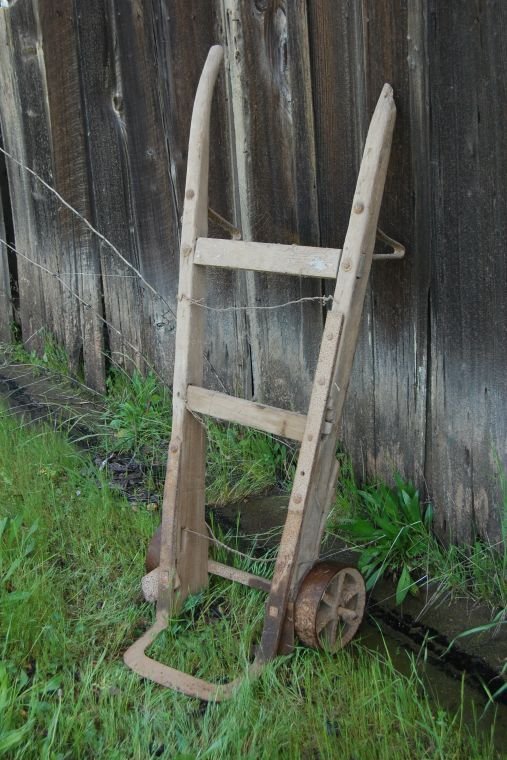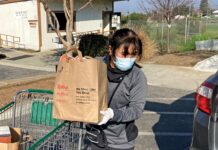{{tncms-asset app=”editorial” id=”f3c35f50-c42b-11e3-92b2-10604b9ffeb6″}}
This beautiful barn, on what was once part of Rancho Solis, belongs to Dario & Gladys Pia, passed down from Dario’s father, Secondo.
Born in 1896, Secondo emigrated from the Piedmont region of northern Italy—leaving the rural community of Montaldo Scarampi, part of the famous wine-growing region surrounding Asti—coming to America at age 17.
{{tncms-asset app=”editorial” id=”89806264-c42b-11e3-a3de-10604b9ffeb8″}}
{{tncms-asset app=”editorial” id=”6968eae6-c42b-11e3-a7ff-10604b9ffeb6″}}
{{tncms-asset app=”editorial” id=”b0b8aef4-c42b-11e3-9ba7-101f742c6b16″}}
For a time, Secondo lived in San Francisco, as part of a band, he played in Italian restaurants there.
Later, he farmed in the Central Valley then worked, with his brother-in-law, as a baker in Hanford—this was Augusto Ginelli, father of former Gilroy School District administrator, Frank Ginelli. Ginelli himself was Piedmontese, formerly from Allesandria, east of Asti. Augusto’s wife had an eligible sister, Louisa, Secondo asked her to be his bride, and they were married in 1929.
{{tncms-asset app=”editorial” id=”3408b650-c42c-11e3-b69b-10604b9f7e36″}}
In 1936, the Pia’s bought about 20 acres on Hecker Pass from Bill Eastman, paying about $6,000 for the property with the barn and small home which had once been a bunkhouse, probably built around the early 1900s. Walls in the home were like a barn’s, 1” x 8” boards set vertically. There was no bathroom, so the family had to use an outhouse. Though there was a bathtub, they had no plumbing to drain it, so the children bathed in the sink.
Secondo later updated the walls and installed a septic tank, digging leach lines by hand. Prunes and grapes were the principal crops, and the barn held trucks, tractors, disc, prune trays and boxes. Behind the barn still stands a prune dipper. Dario remembers the smoke and smell of the fuel oil used to heat a mixture of water and lye; he likens it to the aroma of smudge pots. When the prunes’ skins cracked, they were removed from the dipper and laid out to dry in the sun. Eventually, Secondo had their prunes processed at the Sunsweet plant.
Mr. and Mrs Pia raised three children, daughter Lydia (who married Leo Stay of Gilroy and later moved to Minnesota) and twin sons, Dario and Edward (who lives in Almaden). The Pia children attended Adams School, along with Gary and Joann Bonesio, as well as other kids from the West side.
Across the street from the Pia’s was the former Live Oak School, the landlord had it converted to living quarters for the Bertero family. When Jim Frantzich bought that parcel, members of his family also occupied it, but when, ironically, it was crushed by a falling live oak tree, he eventually used the lumber to build a small house behind his own.
In the late 1960’s, the Pia’s built a new house, just to the West of the old one. Dario and Gladys married in 1967, and in 1971 built their own home behind the original place—today their son Rob lives there.
When serving in Germany, Dario travelled to Italy and was able to visit his uncle, even seeing where he worked at a winery in Asti. Sadly, Louisa Pia passed away in 1964. In 1967, Secondo married again, but after just a few years, she passed away too. Secondo carried on, living a full life along the Hecker Pass corridor, dying at age 94 in 1990.
I savor the sight of Pia’s barn, passing it almost daily; and it’s obvious the family does too. The wood siding has weathered richly and still holds mementos of farming as well as toys remaining from children and grandchildren. One room is stacked with prune boxes marked S. Pia, prune trays looking ready for another crop, and orchard ladders just waiting to be climbed. Tucked away are old implements, and even a hay crib from the days when livestock lived in the barn.
Like so many older buildings, this barn speaks to traditions and the character that has made Gilroy a great place to live. May we preserve and cherish such places because of their beauty and the joy they give us.
“Barn Again” highlights South County barns and farm buildings, documenting and savoring the beauty and function of our agricultural heritage and sharing the rich stories of community members who own and preserve these treasures.
The author is anxious for contributions and asks readers for suggestions about barns and farm buildings to feature, photos and information about past and present barns, and about agriculture-related collections like milk bottles, tractors, tools and more.











